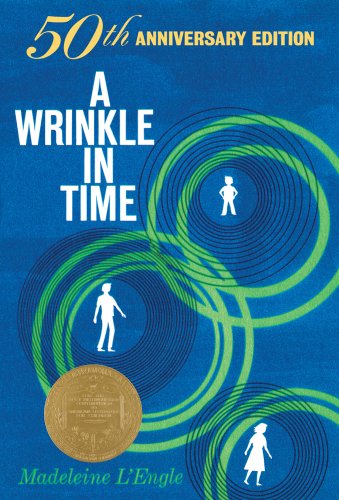
Fifty years ago, Madeline L’Engle published her work A Wrinkle in Time, the first in her series of the Time Quintet. The work went on to garner several notable awards such as the Newbery Children’s Award and the Sequoyah Book Award.
A Wrinkle in Time, best categorized as a children’s science fiction book, centers around two families, the Murry and O’Keefe families. Meg Murry, Charles Wallace Murry, and Calvin O’Keefe search for Dr. Alex Murry, a missing scientist who disappeared after working on a project called the tesseract. In this book, L’Engle introduces an extremely mixed cast of characters who have fanciful names such as Mrs Whatsit, Mrs Who, and Mrs Which, who are angelic beings, and introduces various motifs and themes that run along the story.
The main themes in the book are the conflict between good and evil and the idea of conformity. The fight between good and evil is represented by the fight between light and darkness, and the fight between artists and philosophers with The Black Thing, which embodies all the evil in the world. The idea of conformity is the theme that is modeled by the planet of Camazotz, in which IT, the book’s main protagonist, holds Meg’s father captive and later Charles Wallace. Some underlying, ubiquitous motifs are Christian motifs which emerge in the forms of Biblical allusions and quotes.
L’Engle uses fanciful characters and settings with unique quirks to bring the story to life. For example, Mrs Whatsit is extremely talkative and Mrs Which is characterized by her sibilant speech, dragging on words such as the phrase “We are here” to “Wwee arre hherre.” The author additionally creates memorable settings by infusing each planet with its own distinctive characteristic. For example, Camazotz is a dystopia in which everything is regulated and mechanical, while Uriel is a colorful and vivid paradise. Such settings create memorable events in the book and jumping from planet to planet allows the author to explore different concepts and to suggest life beyond earth that is beautiful and horrifying.
While it is a children’s book, A Wrinkle in Time is sprinkled throughout with science that is both interesting and tantalizing. The concept of fourth and fifth dimensions , while not a light topic, are eased into by explaining from the ground up. The idea is then used for faster-than-light travel between worlds. The book additionally introduces the possibility of life beyond the Earth and of life in different planet. L’Engle explores the familiar and how it can be jarringly horrifying, as in Camazotz, and the unfamiliar and how it can be unusual but accepting and nurturing, as in Ixchel.
Although fifty years old, A Wrinkle in Time is nevertheless an interesting and memorable book that would appeal to many audiences. Exploring various concepts and tying them together, L’Engle’s work is still relevant today in the fights between what the world would call the good and the evil and the possibility of extraterrestrial life. At half a century old, this book is still going strong.

